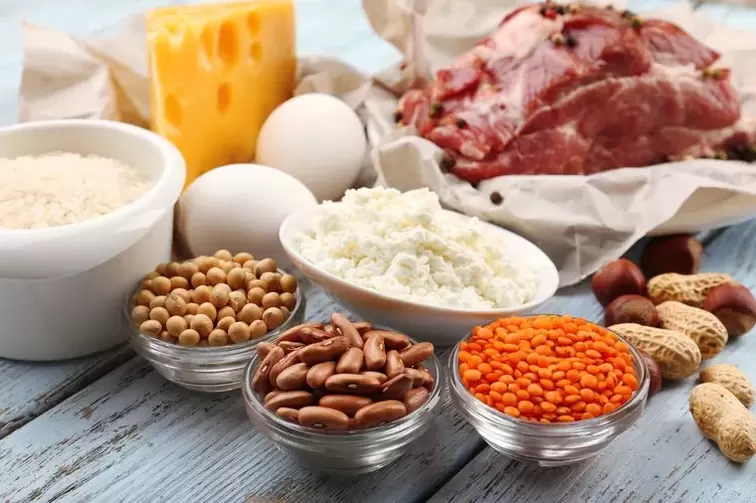
Among the many different weight loss systems, the carbohydrate-free method for weight loss occupies a special place. It is also used by professional athletes for the so-called "drying". The main goal in this case is to get rid of subcutaneous fat and build muscle, providing them with a beautiful relief. Before starting a diet, carefully study all the pros and cons, principles and contraindications.
The essence
As the name implies, the carb-free program is about reducing the amount of carbohydrates in your diet, focusing on fats and proteins. Many other protein diets are based on the same rules - Ducan, Montignac, keto diet. According to reviews, subject to a carbohydrate-free diet, in two weeks the plumb line can be 5-10 kg, depending on the initial body weight.
However, it is impossible to completely abandon carbohydrates, they are necessary for the normal functioning of the digestive tract and the nervous system. After all, carbohydrates are a source of energy for the body, therefore, completely excluding them from the diet, very soon you will begin to feel periodic headaches, drowsiness, fatigue, mood swings, low concentration of attention and other "delights". Therefore, nutritionists recommend staying at 20-30 grams of carbohydrates in food per day. At the same time, products with a low glycemic index have an advantage.
What is GI
The glycemic index is the rate at which carbohydrates in food are absorbed by the body and increase blood sugar.
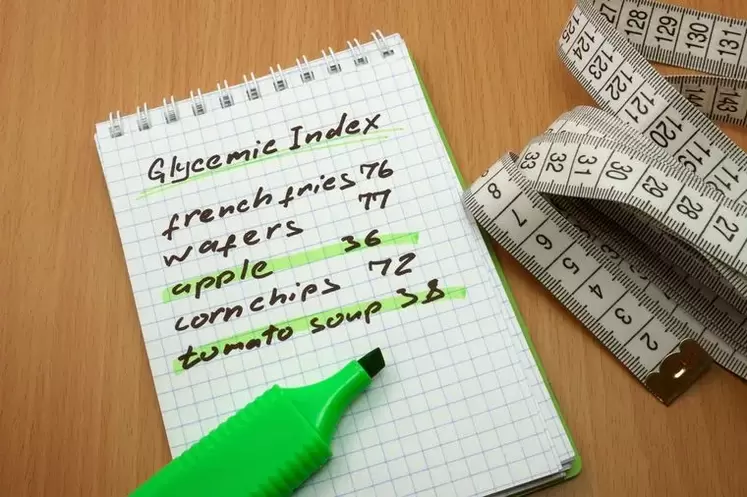
The scale for measuring the glycemic index (abbreviated as GI) consists of 100 units. Accordingly, 0 is the minimum value, that is, products that do not contain carbohydrates at all and 100 is the maximum possible. Foods with a high GI very quickly saturate the blood with glucose, as a result of which the body is replenished with extra calories. If at this moment additional energy is not needed, it is immediately converted into fat accumulations. So the body provides itself with a source of reserve energy.
Remember: it is not high GI foods that will interfere with slimness, but their uncontrolled use. Especially with an inactive lifestyle. For example, if you've just done strength training, fast carbs will be beneficial by stimulating muscle growth. And if you just sit on the couch and watch TV, sweets and pastries will only worsen your figure and health.
Note:the real GI index may vary depending on the amount of food consumed, the method of preparation, heat treatment, combination with other food and other factors. However, the numbers do not differ drastically: Brussels sprouts, for example, will in any case remain a low GI product (10-20 units), and the glycemic index of instant cereals will still be high.
High glycemic index foods (95-70)
These include:
- White bread;
- buns;
- pancakes;
- baked, boiled and mashed potatoes;
- rice noodles;
- instant porridge, including rice;
- honey;
- cornflakes;
- sports drinks (PowerAde, Gatorade);
- sweet pastries;
- muesli with nuts and raisins;
- pumpkin, watermelon and melon;
- milk chocolate and chocolate bars;
- carbonated drinks Pepsi and Coca-Cola;
- dumplings;
- crisps;
- sugar.
Medium GI (65-55)
- Wheat flour;
- packaged juices;
- preserves and jams;
- rye and black yeast bread;
- marmalade;
- muesli with sugar;
- jacket potatoes;
- raisins;
- whole grain bread;
- canned vegetables;
- Pasta with cheese;
- bananas;
- sweet ice cream;
- long grain rice;
- mayonnaise;
- oatmeal;
- buckwheat brown;
- grapes and grape juice;
- ketchup;
- spaghetti;
- shortbread.
Low GI (50-5)
- Sweet potatoes (yams, yams);
- green buckwheat;
- basmati rice;
- unsweetened cranberry juice;
- oranges, kiwi and mango;
- unsweetened apple juice;
- brown rice;
- grapefruit;
- coconut;
- freshly squeezed orange juice;
- unsweetened carrot juice;
- dried apricots and prunes;
- tomato juice;
- cabbage of different types: cauliflower, Brussels sprouts, white cabbage;
- nuts: peanuts, hazelnuts, pistachios, pine nuts, walnuts;
- rhubarb;
- bean curd (tofu);
- soy;
- spinach;
- greens: parsley, basil, oregano.
Important:even low-GI foods contain calories, so you will have to count them. There is no direct relationship between the glycemic index and calorie content.
How does it work
To produce glucose and other energy sources, the body needs a substance called alanine. The body does not receive enough carbohydrates, so it has to use "fat reserves" to produce alanine. In order not to reduce muscle mass, you need to eat protein foods.
You gradually lose weight, the body is cleansed and unloaded. Vigor and well-being are guaranteed.
Note:alanine is an aliphatic amino acid that plays an important role in human energy metabolism. Due to the interaction of alanine with various biologically active compounds, other useful substances are formed in the body.
General principles
For the result to be fast and effective, we carefully observe all aspects of this nutritional system:
- Eat 5-6 small meals throughout the day. You will have to forget about intermediate snacks.
- The norms of water drunk per day are 2-2. 5 liters. Drink water before meals and half an hour afterwards, but not at the same time.
- Eat the last meal before seven or eight in the evening. If in the evening you suffer from an intolerable feeling of hunger, trick your stomach with a glass of water, and then go to bed.
- Take vitamin and mineral supplements.
- Reduce the amount of carbohydrates in the menu gradually: from the usual rate of 150-200 g, approach the minimum value - 20-30 grams.
- Eliminate bread, sugar, coffee, foods containing starch (potatoes, beets, corn), fruits with a high GI, semi-finished products from the diet; food marked "diet" or fat-free, alcohol is also unacceptable.
- From vegetable fats, only a little nuts and olive or flaxseed oil are allowed.
- Frying food is allowed, but again only in olive or linseed oil.
- Don't forget about exercise. If you are completely unbearable to run in the morning or swim, console yourself with the fact that thanks to physical education, the skin will not sag after losing weight, and the muscles will acquire a beautiful shape.
Basis of the diet
Foods that you can eat without restriction:
- meat (beef, veal, rabbit, turkey);
- poultry eggs and offal (liver, tongue, heart);
- fish and seafood (sea fish fillets, shrimps, lobsters, crabs);
- dairy products (cottage cheese, sour cream, milk, unsweetened yogurt);
- berries, citrus and other low GI fruits;
- vegetables (cabbage, peas and fresh beans, leafy greens and vegetables);
- nuts and seeds.
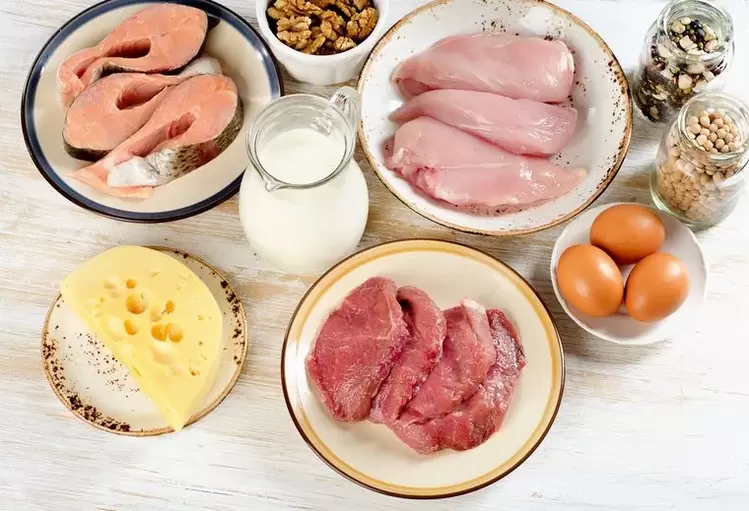
Advantages and disadvantages
pros
- You can compose a menu according to your taste from a variety of permitted products. Every day the diet will be different, which means that the diet is easily tolerated and painless.
- There is no need to waste time preparing any special dishes.
- Acceptable dietary cost.
- Reliability, you will lose weight really quickly.
- When you limit the use of carbohydrate foods in the body, ketones are produced - substances that accelerate the process of burning adipose tissue. Ketones reduce appetite, energize the brain, and act as antidepressants.
Minuses
However, not everything is so rosy, the carbohydrate-free diet also has significant drawbacks.
- As a result of eating a large amount of protein foods, metabolic products overload the liver and kidneys. They work very intensively, which can lead to the development of chronic diseases.
- Refusing food containing carbohydrates, a person deprives his body of vitamins and minerals. Therefore, experts recommend taking vitamins and dietary supplements that have proven themselves.
- With a lack of carbohydrates in the body, ketone bodies are formed. They accumulate in the blood and then pass into the urine. The people call this symptom "acetone in the urine", it indicates a violation of fat and carbohydrate metabolism.
- Often, the body does not want to accept a carbohydrate-free diet, so a person has unpleasant symptoms: weakness, nausea, constipation, or, on the contrary, diarrhea.
- Food rich in protein contains a lot of fat, so be careful about your menu.
Menu
As mentioned earlier, this diet does not have a strict menu, you can compose it yourself.
For 7 days
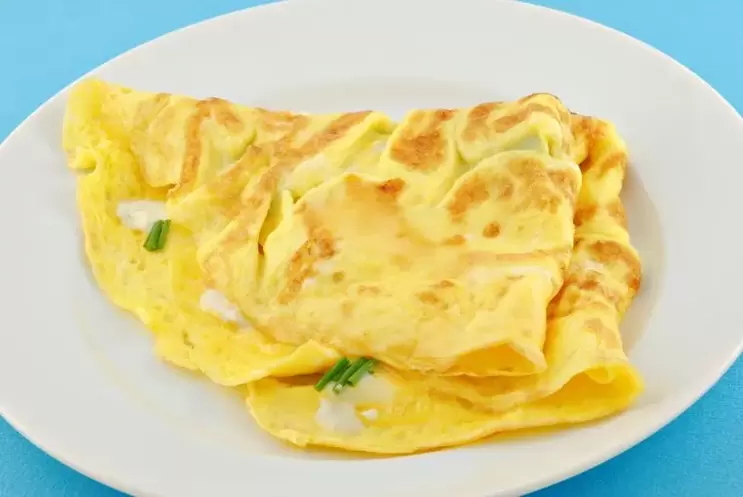
Monday
- Morning: omelet with cheese or an egg; sugarless coffee or orange juice; dietary loaf.
- Day: vegetable soup with chicken broth; chicken with rice; a glass of kefir; instead of rice, you can use a vegetable salad with olive oil.
- Evening: assorted cucumbers and tomatoes, seasoned with lemon juice; low-fat cottage cheese; grapefruit.
Tuesday
- Morning: low-fat yogurt; a piece of cheese; orange or apples.
- Day: vegetable soup with beef broth; boiled veal; kefir or apple juice.
- Evening: boiled cauliflower with mushrooms; boiled egg; dried fruits compote.
Wednesday
- Morning: oatmeal on the water; cottage cheese casserole; green tea.
- Day: fish soup without potatoes; boiled fish; celery salad; coffee.
- Evening: turkey meat with vegetables; tomato juice; Greek salad.
Thursday
- Morning: scrambled eggs with tomatoes; apples; rosehip broth.
- Day: cheese soup; boiled breast with vegetables; yogurt.
- Evening: buckwheat porridge; boiled beef; fruit juice.
Friday
- Morning: cottage cheese with sour cream; boiled egg; sugar free coffee.
- Afternoon: vegetable soup with green sorrel; fish fried in olive oil; green tea or berry juice.
- Evening: cabbage salad; beef steak; herbal tea.
Saturday
- Morning: 2 eggs; oatmeal and tea.
- Day: chicken soup without potatoes; millet porridge; yogurt.
- Evening: boiled fish; cucumber and tomato salad; rosehip broth.
Sunday
- Morning: curd and berry mousse; baked apples.
- Day: turkey borsch; baked fish; tomato juice.
- Evening: beef liver; steamed cauliflower; compote.
For 10 days
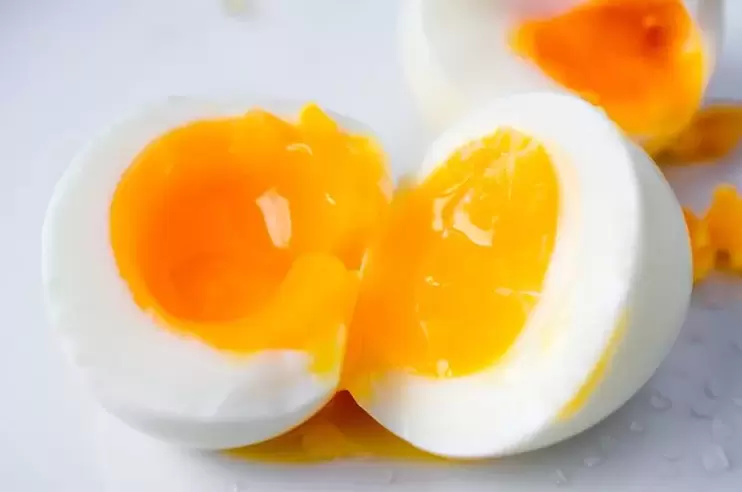
Day 1
- Breakfast: two soft-boiled eggs; assorted cucumbers and tomatoes with the addition of Chinese cabbage (season with 1 teaspoon of olive oil); coffee without sugar or rosehip broth.
- Lunch: a slice of low-fat cheese and two leaves of lettuce.
- Lunch: grilled breast; salad of radish and lettuce leaves; green tea.
- Afternoon snack: a glass of kefir and a handful of berries.
- Dinner: steamed lean fish fillet; baked eggplant or zucchini with cheese.
Day 2
- Breakfast: an omelet of two eggs with tomatoes; natural yogurt with fruit pieces; coffee without sugar and milk.
- Lunch: a glass of kefir and an orange.
- Lunch: flounder fillet; vegetable stew made from tomatoes, zucchini, broccoli, leeks.
- Afternoon snack: cucumber stuffed with grated cheese (45 gr. ).
- Dinner: grilled beef steak; spinach, arugula and avocado salad; carrot juice.
Day 3
- Breakfast: an omelet of two eggs with a tomato; two slices of celery and 45 g of grated cheese; rosehip broth.
- Lunch: a glass of yogurt with berries or fruit pieces.
- Lunch: boiled mackerel fillet; broccoli, leek and tomato puree soup.
- Afternoon snack: a glass of kefir with berries.
- Dinner: grilled pork fillet; steamed cauliflower with the addition of 1 tsp. olive oil; herbal tea.
Day 4
- Breakfast: natural yoghurt with fruit pieces; two soft-boiled eggs; green tea.
- Lunch: two slices of celery and a slice of cheese.
- Lunch: grilled tuna fillet; white cabbage, radish and cucumber salad.
- Afternoon snack: a glass of kefir and a handful of berries.
- Dinner: breast; zucchini pancakes; coffee.
Day 5
- Breakfast: cottage cheese casserole with berries; herbal tea.
- Lunch: a small portion of Caesar and chicken breast.
- Lunch: halibut fillet; assorted white cabbage, cucumbers and radish with olive oil.
- Dinner: beef steak; asparagus baked in the oven, sprinkled with grated cheese.
Day 6
- Breakfast: low-fat cottage cheese with berries and green tea.
- Lunch: grilled breast and salsa salad.
- Lunch: salmon fillet and mushroom noodle soup.
- Afternoon snack: two slices of celery and 45 g of low-fat cheese.
- Dinner: steamed breast and asparagus with grated cheese.
Day 7
- Breakfast: one egg omelet with tomatoes and herbs; natural yogurt with fruit pieces; coffee.
- Lunch: a small portion of Caesar seasoned with olive oil, lemon juice and spices.
- Lunch: flounder fillets and baked cauliflower.
- Afternoon snack: cheese and two slices of celery.
- Dinner: breast and a serving of Mexican guacamole salad and herbal tea.
From the eighth day we start over. In this version, it is allowed to drink a glass of low-fat milk or kefir at night.
Hard variety
This option is only suitable for very motivated people with good health and strong willpower.
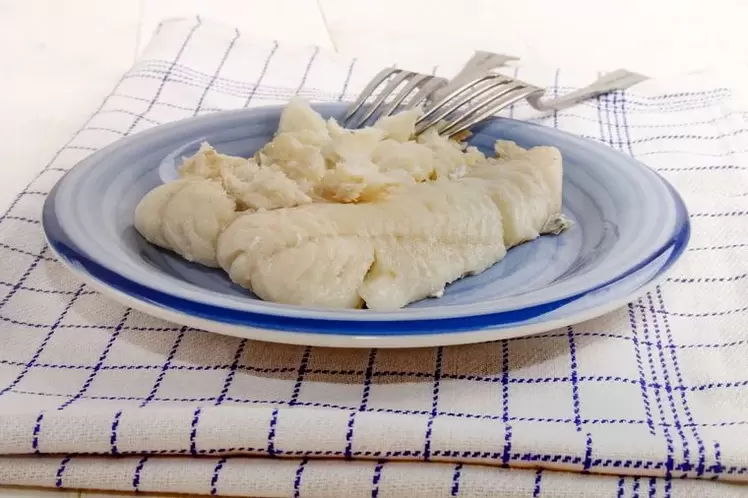
- 1st day. Starting at 10 in the morning, we consume one boiled egg every two hours. Only 5 eggs per day.
- 2nd. During the day, in small portions, we eat 1 kg of lean fish cooked without salt.
- 3rd. 2 boiled breasts without salt.
- 4th. 5 boiled potatoes.
- 5th. Half a kilo of boiled beef or veal.
- 6th. 2 kg of any fruit, except bananas.
- 7th. 2 kg of any vegetables except potatoes. Cooking method: cooking, steaming, grilling.
- 8th. 1 kg of low-fat cottage cheese.
- 9th. 2 liters of low-fat kefir.
- 10th. We drink rosehip decoction all day long.
For 14 days
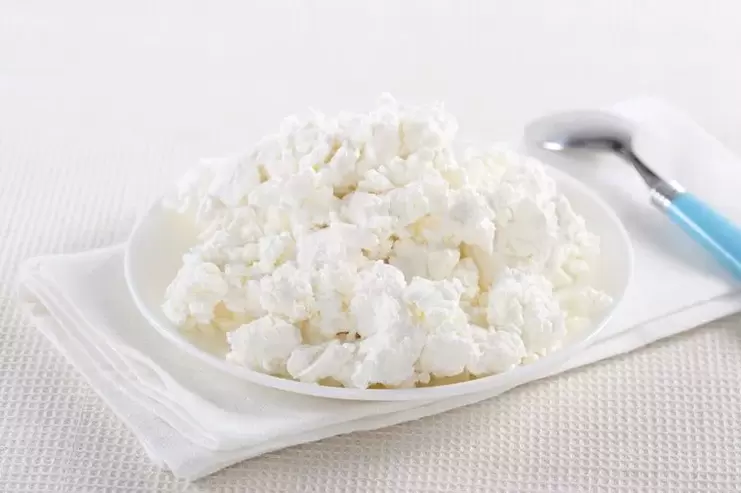
Day 1
- Breakfast: two boiled eggs, tea or coffee without sugar.
- Snack: 100 g of low-fat cottage cheese.
- Lunch: 200 g of boiled pollock, rosehip broth.
- Afternoon snack: white cabbage and cucumber salad.
- Dinner: 100 g of boiled pollock.
Day 2
- Breakfast: oatmeal, egg, green tea.
- Snack: a glass of kefir or natural yogurt with berries or pieces of fruit.
- Lunch: buckwheat porridge and grilled breast 100 g.
- Afternoon snack: assorted cucumbers and tomatoes.
- Dinner: boiled pollock 100 g.
Day 3
- Breakfast: oatmeal, egg, green tea.
- Snack: green apple.
- Lunch: a portion of brown rice and 100 g chicken breast.
- Afternoon snack: curd casserole.
- Dinner: Brussels sprouts salad.
Day 4
- Breakfast: an omelet of two eggs. Tea or coffee without sugar.
- Snack: pollock or steamed breast 100 g.
- Lunch: boiled pollock 200 g, baked vegetables (zucchini, eggplant, different types of cabbage).
- Afternoon snack: assorted vegetables 200 g.
- Dinner: grapefruit and apple juice.
Day 5
- Breakfast: oatmeal and boiled egg.
- Snack: vegetable salad, 50 g of low-fat cheese.
- Lunch: boiled rice and breast, vegetables 100 g.
- Afternoon snack: carrot salad and low-fat cottage cheese, 100 g each.
- Dinner: one green apple and unlimited cabbage.
Day 6
- Breakfast: an omelet of two eggs with a tomato.
- Snack: vegetable salad 150 g or 100 g of cottage cheese.
- Lunch: boiled rice and chicken breast.
- Afternoon snack: carrot salad in olive oil and cabbage.
- Dinner: 100 g of pollock and a glass of kefir.
Day 7
- Breakfast: oatmeal with boiled egg. Tea with a spoonful of honey.
- Snack: apple or orange.
- Lunch: 200 g of boiled beef and pearl barley porridge.
- Afternoon snack: 100 g of cottage cheese.
- Dinner: 200 g of vegetable salad with a slice of cheese.
Day 8
- Breakfast: two boiled eggs, an apple, green tea.
- Snack: orange.
- Lunch: buckwheat porridge or rice with pollock (150 g).
- Afternoon snack: boiled breast 200 g.
- Dinner: vegetable salad 200 g.
Day 9
- Breakfast: a glass of kefir and an omelet.
- Snack: cabbage salad with cucumber 200 g.
- Lunch: boiled rice and breast.
- Afternoon snack: carrot salad.
- Dinner: vegetable salad and a small grapefruit.
Day 10
- Breakfast: oatmeal, egg and tea with a spoonful of honey.
- Snack: vegetable salad 100 g.
- Lunch: a portion of rice, chicken cutlets with steamed onions.
- Afternoon snack: a glass of natural yogurt.
- Dinner: low-fat cottage cheese and green apple.
Day 11
- Breakfast: two soft-boiled eggs, green tea or unsweetened coffee.
- Snack: orange and a handful of nuts.
- Lunch: 200 g of any grilled fish.
- Afternoon snack: tomato juice 200 g.
- Dinner: beef steak 150 g.
Day 12
- Breakfast: oatmeal and egg, coffee.
- Snack: 50 g of low-fat cheese.
- Lunch: 200 g lentil soup, fish cakes.
- Dinner: banana and carrot juice.
Day 13
- Breakfast: vegetable salad, coffee and a bun.
- Snack: cabbage salad.
- Lunch: steamed fish cakes and buckwheat porridge.
- Afternoon snack: an apple and a glass of kefir.
- Dinner: salmon steak, lettuce leaves.
Day 14
- Breakfast: scrambled eggs from two eggs with a slice of bacon.
- Snack: cheese 50 g and two slices of celery.
- Lunch: a portion of brown rice and boiled breast.
- Afternoon snack: 200g sour cream.
- Dinner: vegetable stew and herbal decoction.
For a month
You can make up a diet for such a long period yourself, while observing the following recommendations:

First week (introductory). In the morning we eat complex carbohydrates, for snack and lunch - proteins and complex carbohydrates 50/50, afternoon snack and dinner - protein food. Sweet and starchy foods are completely excluded, but vegetables and fruits with a low GI can be added. The goal of the first week is to prepare the body for a carbohydrate-free diet.
Second week. We eat the following: eggs (2 pieces per day), low-fat cottage cheese, 1% kefir, 0. 5% milk (one glass), boiled beef, skinless chicken breast (fat is concentrated in it), boiled or baked seafoodfish, seafood, fresh vegetables: cabbage, cucumbers, tomatoes, herbs (unlimited), apples and oranges (one per day until 14-00), for dinner you can eat 1 tbsp. a spoonful of bran.
Third week. Low-fat cottage cheese, eggs (2 - whole, 2 more - only proteins), boiled breasts, boiled or baked sea fish, cucumber (one piece per day), herbs, bran, 1 tbsp. spoon three times a day.
Fourth week. 2 boiled chicken breasts a day, boiled egg whites (7-8 pieces daily), a bunch of parsley, bran.
What is drying
This term has entered daily life from fitness and bodybuilding. Athletes use it to burn fat while maintaining muscle mass.

What you need to know
- Even if you carry out drying according to all the rules, it is not at all safe. The kidneys and liver are overloaded, which provokes weakness and lethargy, exacerbation of chronic diseases, and malfunctions in the gastrointestinal tract.
- If you do not exercise, then no fat drying will occur, it will be a normal low-calorie diet. You should not expect miracles from her, but health problems are quite expected.
- Drying only makes sense if you have previously been involved in sports training and have muscle mass that you need to get rid of the fat layer. If there are no pronounced muscles under the layer of fat, it will be more effective for you to abandon flour, fatty and sweet foods.
- It's a lengthy process and doesn't sound like a quick pre-vacation weight loss routine. Short-term drying (to prepare for a competition) lasts one to two weeks, and long-term (gradual) drying takes five to seven weeks. Only a gradual one will help to tighten the figure.
- It is held no more than twice a year.
Perfect drying performance
- Liver support should be carried out two weeks before drying begins. This will help you hepatoprotectors - prophylactic agents that have a positive effect on the liver.
- During this time, the body should not experience any stress: travel, wedding, session, emergency at work. Therefore, carefully plan the drying period.
- Women are not recommended to "dry" for more than one and a half months, otherwise hormonal disturbances will follow. At the end of the process, exit follows. In terms of duration, it is equal to the drying itself.
- Workouts during this period should be short but very intense. Cardio workout should last no more than half an hour, and strength workout should last 45 minutes.
- The calorie content of the diet is only 300-350 calories less than usual. A menu that is too low in calories (up to 1200 kcal per day) is suitable only if your weight is 55 kg or less before drying.
- Protein shakes and other dietary supplements are used in consultation with the trainer.
Nutritionists strongly warn: drying is not just a carbohydrate-free diet, it is too serious a process to do it yourself, at home. Experiments can negatively affect health.
Contraindications of a carbohydrate-free nutrition system
Before starting such a diet, you should consult your doctor in the following cases:
- If you have recently undergone surgery.
- Have kidney, liver, or gastrointestinal problems.
- Suffer from some kind of chronic illness.
Diet is strictly prohibited:
- children under 18;
- lactating and pregnant women;
- with food allergies to protein products.
Carbohydrate Recipes
To make your menu tasty and varied, we offer a few simple recipes.
Chicken balls with cheese
Take 0. 5 kg of chicken fillet and scroll through a meat grinder. A dash of salt, pepper, and two minced cloves of garlic will enhance the flavor. Mix everything well. Beat in a raw egg. On a coarse grater, grate 200 gr. hard cheese and the resulting shavings, too, add to the minced meat. Stir again. Brush a baking sheet with olive oil and form into small balls of meat. Bake them in the oven at 200 C for 20 minutes. When browned, turn over to the other side. Serve hot, sprinkled with herbs.

Liver casserole
Take one kilogram of beef liver, rinse it thoroughly in cold water, grind it to a puree consistency using a meat grinder or blender. Finely chop one onion and 200 gr. champignons. Whisk 4 egg whites. Add 2 tbsp. tablespoons of oat bran. Mix the whole mass well. Put in a mold, greased with olive oil and bake in the oven at 180 degrees for 40 minutes. During cooking, you can use a sugar-free kebab seasoning.
A casserole option without onions and mushrooms is also possible.
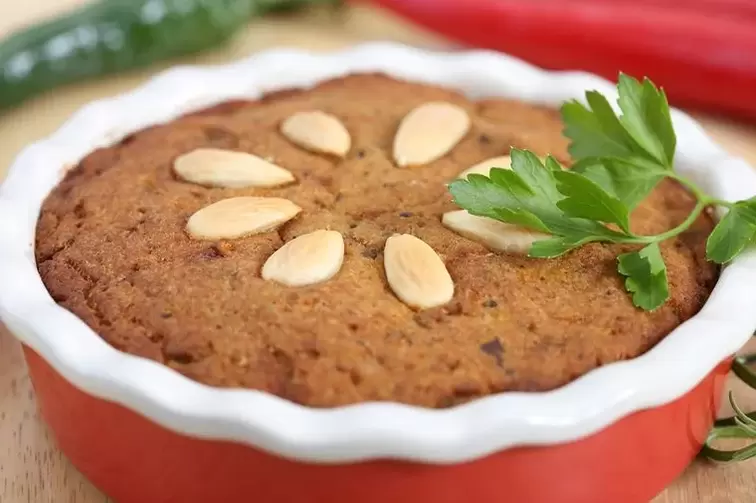
Light chicken salad
Boil 100 gr. chicken fillet. Drain the broth, it will come in handy for soup. Take 50 gr. lettuce leaves and cut into strips. Cut the finished fillet, cucumber, tomato and boiled egg into cubes. Combine all ingredients and add a drop of olive oil.
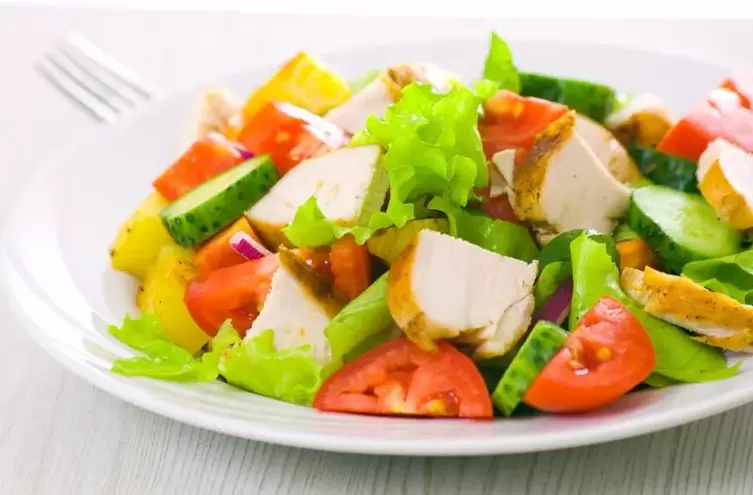
Mushrooms baked in eggs
Take half a kilo of fresh mushrooms, chop finely, boil in salted water and put in a colander. When the liquid has drained, transfer the mushrooms to the skillet and fry a little in olive oil. Then transfer to a baking sheet and sprinkle with herbs. Salt and pepper to taste. Use a spoon to make two holes in the mass and pour in the raw eggs. Bake in oven until eggs are done.
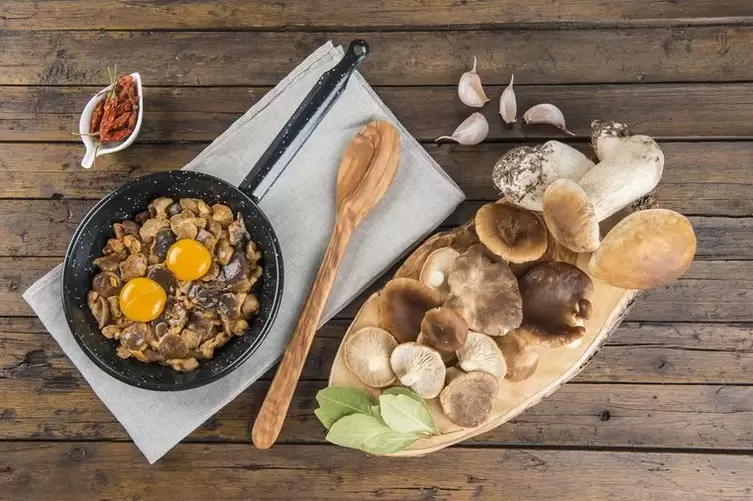
Pumpkin pancakes
Take 200 gr. pumpkin and grate. Beat one raw egg into the resulting mass. Add 4 tbsp. tablespoons of flour and a pinch of soda. Stir the pumpkin dough until smooth. Shape the pancakes and bake them at 200 degrees. You can sprinkle them with grated cheese beforehand. Instead of baking, the pancakes can simply be fried.

Exiting the diet
How to get out of the diet:
- Return to your normal diet gradually, adding new foods every week. For example, seven days after the end of a marathon, you enter pasta into the menu. Fourteen days later - starchy vegetables, after three weeks - cereals, and so on . . .
- Continue to eat fractionally: in small portions several times a day. Nutritionists say that 5 meals a day are much healthier than more infrequent meals.
- Stick to the green plate rule. It sounds like this: half of it is filled with leafy greens and crispy vegetables. One quarter of a plate: cereals - rice, bulgur, beans and the second quarter: healthy protein foods the size of a human palm - fish, chicken, beef, etc.
- The amount of carbohydrates consumed every day increases by only 30 grams. It's great if these are slow carbohydrates.
- Don't forget about exercise. You don't have to spend evenings in the gym, you can just walk at a brisk pace and do light exercises in the morning.
- Limit your fat intake.













































